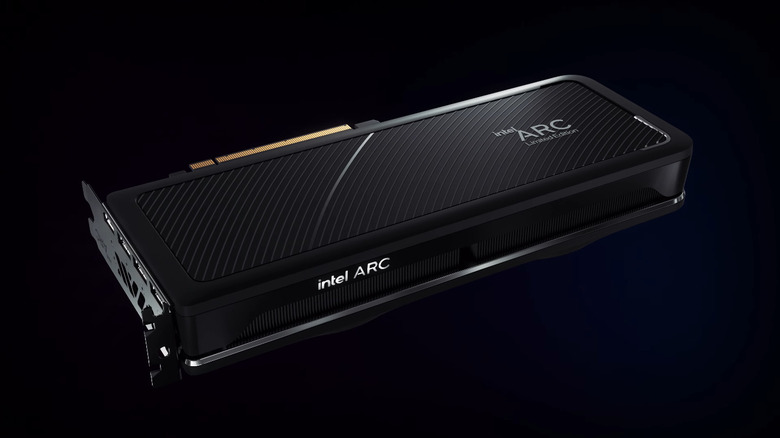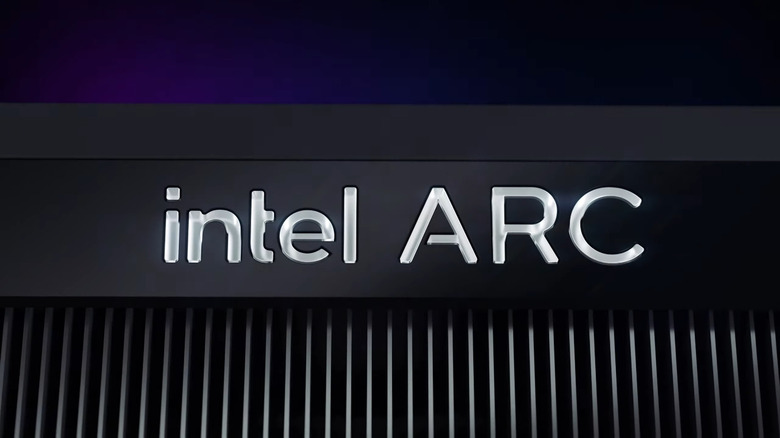First Intel Arc A350M Benchmarks Show Performance On Par With Nvidia GTX 1650
Nobody expected Intel's slowest and least powerful Arc GPUs to come out of the gate swinging. However, a new set of Arc A350M benchmarks have given us a solid idea of what to expect from the new graphics system. Based on a series of benchmarks shared by Twitter user @harukaze5719, the Arc 350M looks to perform on par with Nvidia's older GTX 1650 cards.
That isn't good news for anyone hoping it would perform closer to the RTX 3050. The RTX 3050 is quite powerful despite being the "low end" of the 30 Series. However, these new Intel cards shouldn't be written off just yet.
First Intel Arc A350M benchmarks are on par with older Nvidia GPUs
While benchmarks for the A350M aren't astounding, you shouldn't expect a card made for ultraportable devices to stand up to those like the RTX 3050, which are still intended for gaming. Despite showcasing the FPS of certain games at 1080P on the Arc GPUs, Intel's A350M and A370M aren't mainstreaming gaming cards. Instead, Intel designed these chips for gaming on more casual laptops.
As such, you're never going to see these lower-powered cards performing on par with the gaming beasts of Nvidia's Ampere series. But that doesn't mean that the A350M benchmarks are bad news. In fact, they're actually pretty solid benchmarks for what these cards are supposed to be. A replacement for integrated graphics in ultraportable devices.
You also have to take into account the other features that they offer, like ray-tracing support and Intel's upcoming XeSS AI-upscaling. These are features you won't find on the older cards that the A350M compares to. They're also not features you'll find supported in Intel's current integrated graphics systems, either.
How the first Arc GPUs stack up
Samsung Galaxy Book 2 PRO
Intel i7 1260P + Intel ARC A530MDefault VS Performance mode
3DMark Firestrike, TimeSpy pic.twitter.com/UP8mfvy9R0
— 포시포시 (@harukaze5719) March 31, 2022
But how exactly do the numbers stack up? Here's a deeper look at the results from the first A350M benchmarks.
Twitter user @harukaze5719 included scores for Fire Strike and Time Spy (both part of 3DMark) using both the default and performance variations of the Arc A350M. The poster used a Samsung Book Pro2 laptop using the new graphics system to capture these benchmarks.
In Fire Strike, the Arc A350M scored 6,876 in default mode and 7,318 in performance mode. For Time Spy, the difference between the two modes was somewhat similar. At default performance, the Arc A350M managed 2,653, with it peaking at 3,494 in performance mode. The older GTX 1650 scored 8,152 in Fire Strike and 3,430 in Time Spy, as noted by Notebook Check.
Again, the A350M's scores aren't great compared to the much higher 3DMark scores the RTX 3050 showcases. However, The A350M isn't trying to compete with that particular card. If Intel does want to give Nvidia and AMD a run for their money, though, its next Arc GPUs are going to need to deliver some amazing benchmarks. Especially if it wants to stand up to the new RTX 3090 Ti.

